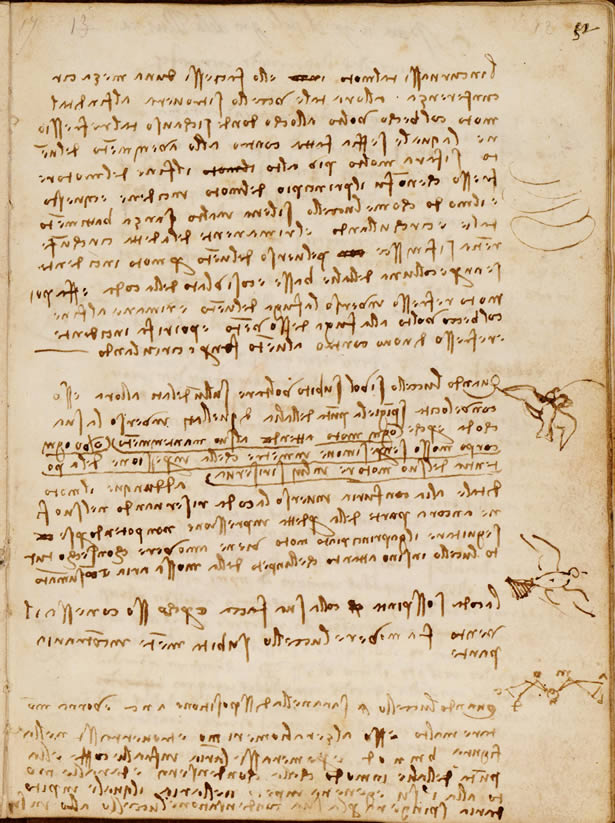Fol. 12r
«Quando l'uccello sarà nella posizione "a" "n" "c" e vorrà salire in alto, esso alzerà gli omeri "m" "o" e si troverà nella posizione "b" "m" "n" "o" "d" "e" e l'aria gli premerà fra le coste e la punta delle ali in modo che si condenserà e gli darà movimento all'insù e genererà un impeto nell'aria, la quale per la sua condensazione spingerà l'uccello all'insù»
(When the bird is in position a n c and wants to rise higher, he raises the humeri m o and finds himself in the position b m n o d e and the air will push between the ribs and the tips of the wings such that it will condense, giving him movement upwards, and generating an impetus in the air, which due to its condensation will push the bird upwards.)
NOTE. For each page of Leonardo’s Codex we provide a brief summary, with the quotation of one that page’s most significant passages edited in modern Italian, with an English translation.
translation by Kim Williams

